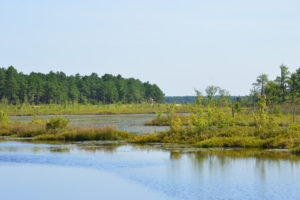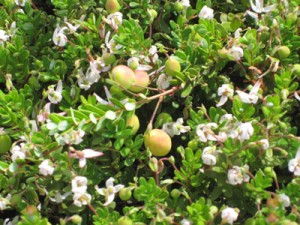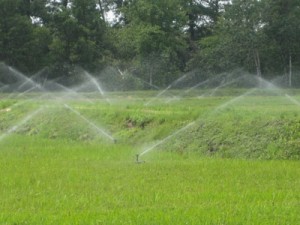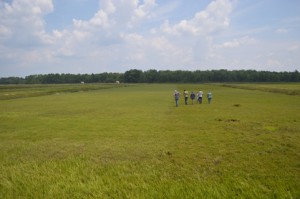Bloom is almost over, we’re starting to remove the bees, and now our team is looking at the first real stretch of hot days this summer.
Once the fruit is formed, post-bloom, it’s important to keep them from what we term “scalding”. Scald occurs when the temperature is high but the dew point (humidity) is low; as Dr. Peter Oudemans at the Marucci Center likes to say, “When people are comfortable, the cranberries are in trouble.”
Cranberries need about an inch of water each week during the growing season (either via rain or irrigation), preferably early in the morning or at night, in order to avoid losing it to evaporation. We irrigate for two reasons: first, to keep the vines healthy and productive, and second, to protect them from the heat. Keeping them cool helps protect the bloom, the fruit, and the vines themselves.
When humidity is low, applied water will readily evaporate and cool the fruit. During the day, if temperatures get up to around 95 degrees, we will turn on the irrigation in order to cool the bog down to the 80s. We’ll run the pumps for about an hour or two, depending on variables such as wind, temperature, and humidity. There is also a distinct difference between sending water through the root system and keeping the bog cool. The trick is avoiding complications from too much moisture, which can cause conditions that are welcoming to fungi such as phytophthora, which causes root rot.
Vines shouldn’t be damp all the time; it’s a balancing act to keep the fruit at optimum growth conditions while avoiding oversaturation. The key to walking the tightrope is constant evaluation and always being aware of bog conditions.




